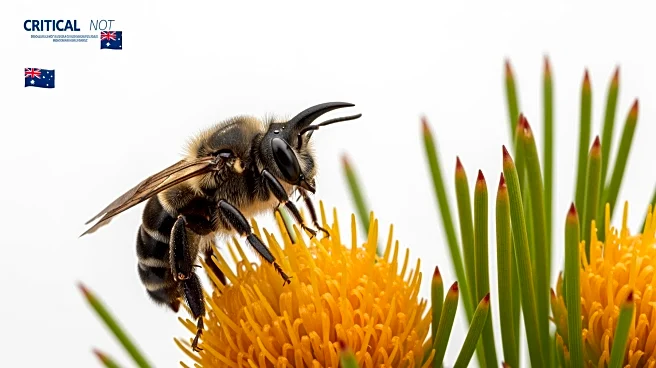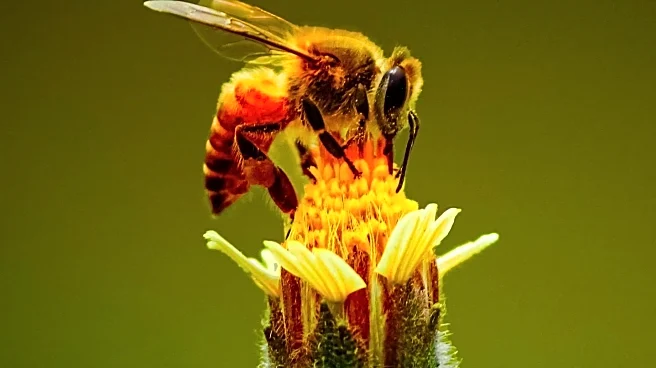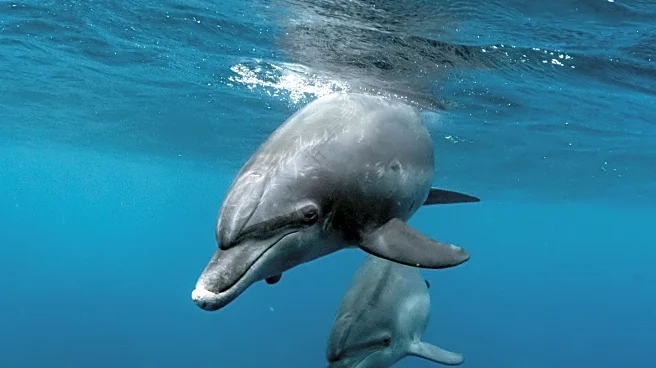What's Happening?
A new species of bee, named Megachile lucifer, has been discovered in Western Australia by scientist Kit Prendergast. The bee is notable for its female members possessing devil-like horns, which measure
approximately 0.9 millimeters. These horns may assist the bees in accessing flowers, competing for resources, and defending nests. The discovery was made during a survey of a critically endangered wildflower in the Bremer Ranges. The species has not been previously collected or described, highlighting the need for further research and conservation efforts in the region.
Why It's Important?
The discovery of Megachile lucifer underscores the importance of studying and conserving native bee species, particularly in areas vulnerable to habitat disturbance and climate change. The Bremer Ranges, where the bee was found, faces threats from gold mining and environmental changes. Protecting such regions is crucial for maintaining biodiversity and supporting ecosystems. The discovery also highlights the lack of funding and research into native bee taxonomy, with many species remaining undescribed. This situation poses risks to both the bees and the plants they pollinate, potentially leading to losses before their ecological roles are fully understood.
What's Next?
Further research is needed to observe the behavior of Megachile lucifer, particularly the function of its horns and nesting habits. Conservationists are calling for the Bremer Ranges to be formally protected to prevent clearing for mining or road access. More surveys are necessary to locate the species and ensure its habitat is preserved. The discovery may prompt increased funding and interest in native bee research, potentially leading to the identification and protection of other undescribed species.
Beyond the Headlines
The naming of the bee species reflects cultural influences, as Kit Prendergast was inspired by the Netflix show 'Lucifer.' This highlights how popular culture can intersect with scientific endeavors. The discovery also raises ethical considerations regarding the balance between economic development, such as mining, and environmental conservation. Protecting native species and their habitats is essential for sustaining ecological health and diversity.











